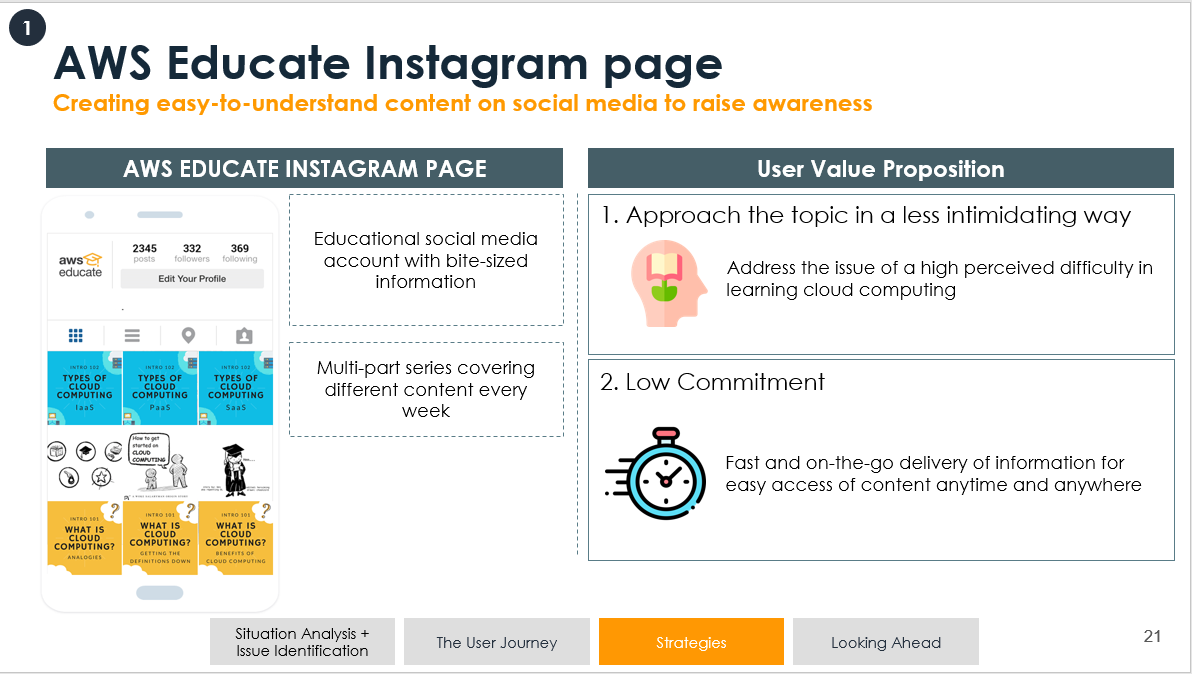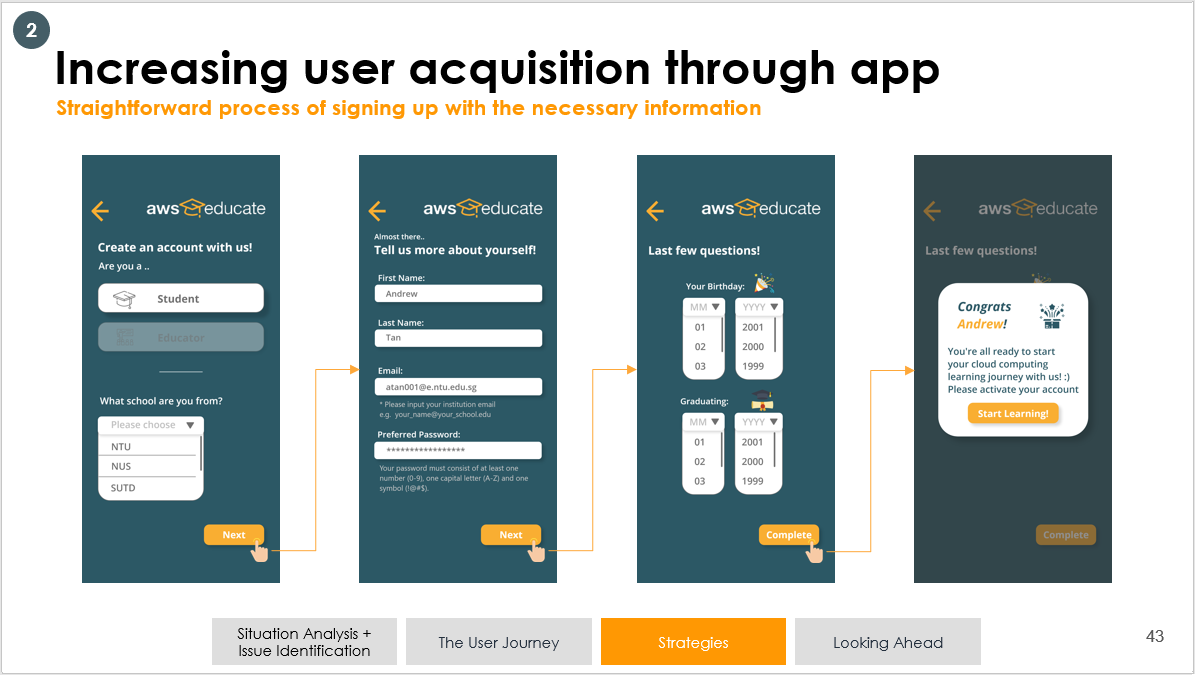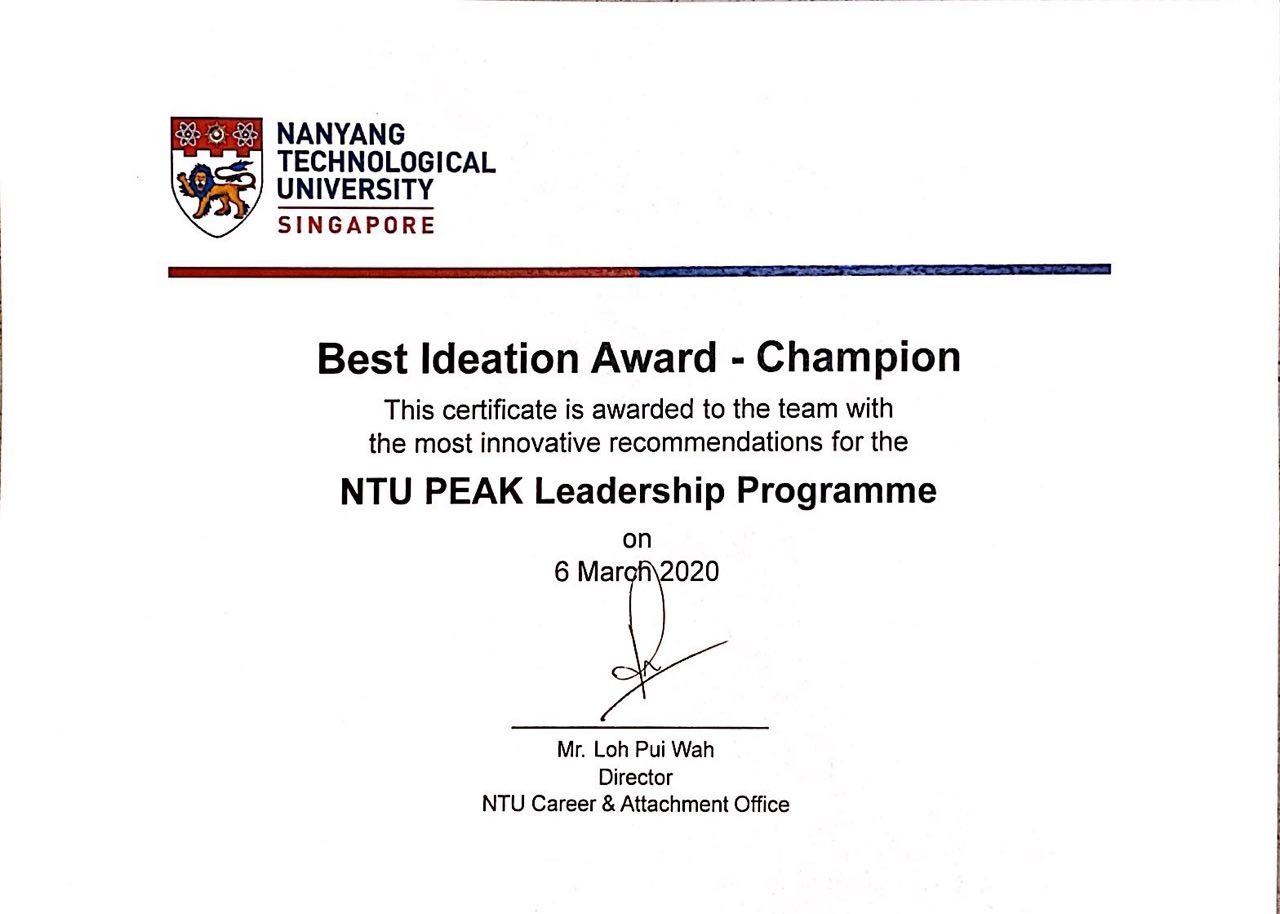Amazon Web Services (AWS) - Consultant
NTU PEAK Leadership Programme
NTU PEAK is a one-month accelerated leadership development programme to groom and develop 40 selected high-calibre students into industry-relevant future leaders for the workplace and community. Students are given the opportunity to collaborate with industry leaders and experts on a real business problem.
Team:
Tan Yew Jie, Aditya Bansal, Low Jia Yi, Joey Goh Xin Yun, Tan Shi Tong (Myself)
Role:
For most parts, we worked collaboratively and effectively throughout the project.
Achieved:
• Champion - Best Ideation Award (user-centricity, innovativeness, storytelling, and practicality)
• Best Presenter Award (clarity, delivery, creativity)
"How might AWS Educate attract students?"
Initial Research
We conducted a situational analysis of the current Singapore context for cloud computing
• Why is there a low uptake of cloud learning by students?
• Why is there a lack of engagement on AWS Educate?
• What is the vision of the AWS Educate Platform?
• Who are the market drivers in the global digitalisation landscape?
• What has been done to encourage cloud learning and how has it been effective/ineffective?
Our Findings
There exists a cloud skills gap where there is a high demand for cloud computing skills but low supply.
Low Supply
• 2% of LinkedIn users indicated they have cloud-related skills in Singapore
• Cloud related courses did not enter the Top 50 list of the "Top 5 Most Searched Digital Courses in SkillsFuture Portal 2020"
This is despite measures such as mandatory cloud related modules in education and existing investments and subsidies ($37 million) for cloud-related courses under SkillsFuture Schemes

User Journey
We mapped out the user journey to understand the different stages of adopting cloud computing

User Groups Segmentation
We divided the users to 3 different segments
We identified University Students as our target market (instead of Lifelong learning students, students of other level of education)

"How might we increase the awareness, engage and retain students who are of (quadrants) 1, 2 and 3 to/on the AWS Educate Platform?"
User Interviews
We conducted 15 one-on-one interviews and around 50 surveys with university students to understand their online learning behaviors, motivations and awareness to AWS Educate.



Qualitative results were classified based on key themes and concepts.

"How might we increase university students’ usage of the AWS Educate platform?"
Ideation
After defining our problem statement, we brainstormed for ideas.
First, using post-its, each of us came up with ideas and we congregated our ideas based on themes/concepts.
Second, we used circles brainstorming to think more broadly, in terms of what companies in the similar, alternative (not online learning) industries are doing. We identified key triggers and drivers in alternative settings which we can also possibly implement in our strategy.


Solutioning and Prototyping








AWS Educate App










